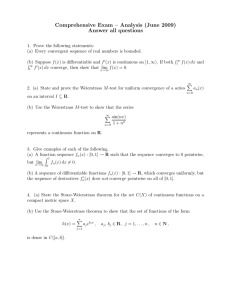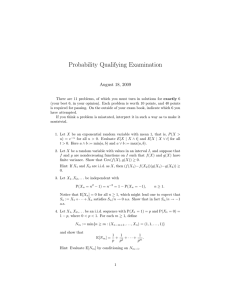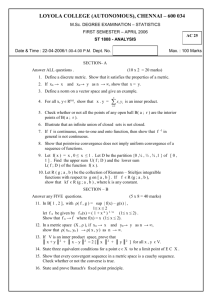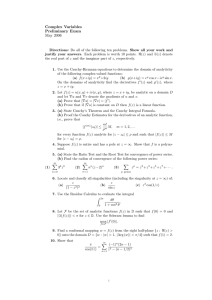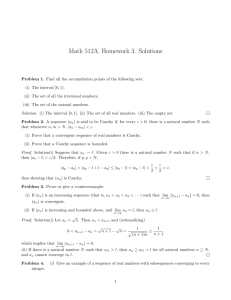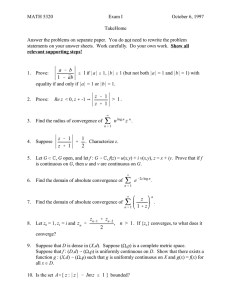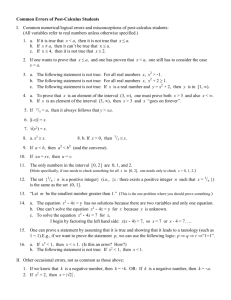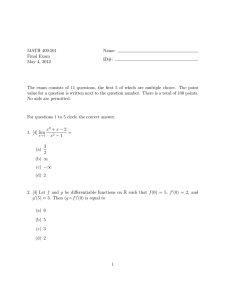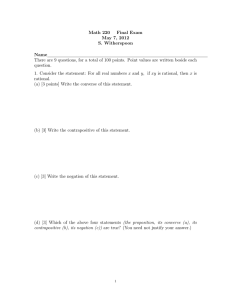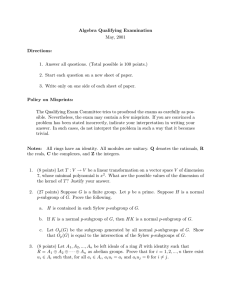Comprehensive Exam – Analysis (January 2010)
advertisement
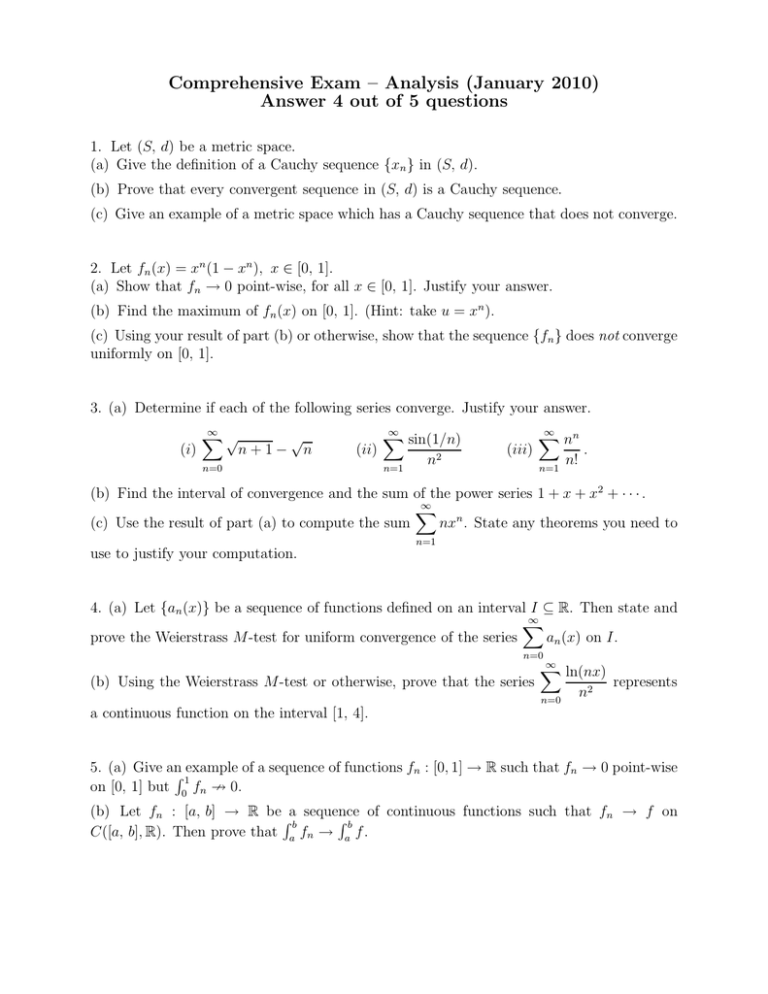
Comprehensive Exam – Analysis (January 2010)
Answer 4 out of 5 questions
1. Let (S, d) be a metric space.
(a) Give the definition of a Cauchy sequence {xn } in (S, d).
(b) Prove that every convergent sequence in (S, d) is a Cauchy sequence.
(c) Give an example of a metric space which has a Cauchy sequence that does not converge.
2. Let fn (x) = xn (1 − xn ), x ∈ [0, 1].
(a) Show that fn → 0 point-wise, for all x ∈ [0, 1]. Justify your answer.
(b) Find the maximum of fn (x) on [0, 1]. (Hint: take u = xn ).
(c) Using your result of part (b) or otherwise, show that the sequence {fn } does not converge
uniformly on [0, 1].
3. (a) Determine if each of the following series converge. Justify your answer.
∞
X
√
√
(i)
n+1− n
(ii)
n=0
∞
X
sin(1/n)
n=1
n2
(iii)
∞
X
nn
n=1
n!
.
(b) Find the interval of convergence and the sum of the power series 1 + x + x2 + · · · .
∞
X
(c) Use the result of part (a) to compute the sum
nxn . State any theorems you need to
n=1
use to justify your computation.
4. (a) Let {an (x)} be a sequence of functions defined on an interval I ⊆ R. Then state and
∞
X
prove the Weierstrass M-test for uniform convergence of the series
an (x) on I.
n=0
(b) Using the Weierstrass M-test or otherwise, prove that the series
∞
X
ln(nx)
n=0
n2
represents
a continuous function on the interval [1, 4].
5. (a) Give an example of a sequence of functions fn : [0, 1] → R such that fn → 0 point-wise
R1
on [0, 1] but 0 fn 9 0.
(b) Let fn : [a, b] → R be a sequence of continuous functions such that fn → f on
Rb
Rb
C([a, b], R). Then prove that a fn → a f .
